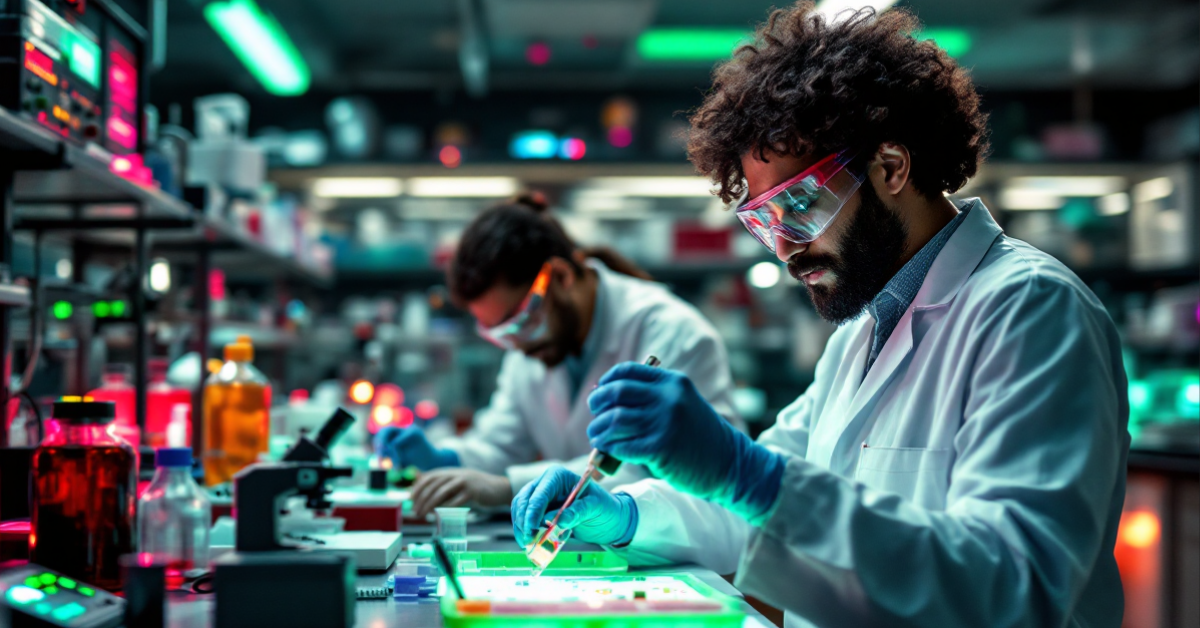Peptides have become one of the most fascinating frontiers in modern biomedical research. These short chains of amino acids act as signaling molecules, metabolic regulators, and structural components within the human body. While several peptides have made the transition into approved therapies, the majority of peptides available to the scientific community remain categorized as research-use only. This classification highlights their importance in laboratories, universities, and biotech institutions, while also reinforcing the boundaries of compliance. These compounds are not for human consumption and are not intended to diagnose, treat, or cure any disease. Instead, they serve as valuable tools for scientists striving to unravel the complexities of human biology.
What Are Peptides?
At their core, peptides are simply strings of amino acids linked together by peptide bonds. They range in size from just a few amino acids to several dozen, making them smaller than proteins but larger than amino acid metabolites. Their simplicity, however, does not limit their power. Peptides play vital roles in nearly every biological process—whether signaling hormones, acting as messengers between cells, or supporting immune and metabolic functions.
In the realm of research, peptides are often synthesized in laboratories using advanced chemical methods. By isolating specific sequences, researchers can study how these small molecules interact with receptors, enzymes, and pathways in model systems. This controlled research allows scientists to explore both the potential and the limitations of peptides in a way that would not be possible in uncontrolled settings.
Research-Only Classification: Why It Matters
The term “research-use only” (RUO) is not just a label; it is a regulatory and compliance safeguard. Peptides sold under this classification are not approved drugs, dietary supplements, or consumer health products. Instead, they are chemical reagents designed exclusively for laboratory investigation. Regulatory bodies, including the U.S. Food and Drug Administration (FDA), place a sharp distinction between peptides for research and peptides approved for medical treatment.
For compliance, research-use peptides carry strict disclaimers:
-
Not for human consumption
-
Not intended to diagnose, treat, cure, or prevent disease
-
For laboratory and preclinical research only
These disclaimers protect not only manufacturers and suppliers but also the broader research community. By ensuring peptides remain within their intended use, scientists can continue to explore new pathways without creating confusion between research tools and approved medical products.
Applications of Peptides in Medical Research
Although not intended for clinical use, peptides remain invaluable in scientific research. Their applications span a wide spectrum of fields:
1. Basic Biological Research
Peptides allow researchers to probe cellular communication. By introducing synthetic peptides into model systems, scientists can study how receptors respond, how cells adapt, and how pathways regulate growth, metabolism, and immune function.
2. Preclinical Models
Animal and cell-culture models frequently use peptides to explore pharmacological properties such as half-life, metabolism, and receptor specificity. For instance, scientists studying obesity and glucose regulation may investigate how GLP-1 receptor agonists behave in controlled preclinical environments.
3. Drug Discovery Pipelines
Pharmaceutical research often begins with basic peptide screening. By mapping out peptide-receptor interactions, companies can identify candidates for further development. Research-only peptides are essential stepping stones that may one day lead to clinical breakthroughs.
4. Biotechnology Development
In biotechnology labs, peptides are used for assay development, calibration, and validation. This helps researchers create more accurate diagnostic tools, develop better imaging techniques, and refine therapeutic strategies before human testing ever begins.
Examples of Peptides in Research Focus
A number of specific peptides have gained prominence in laboratories worldwide:
-
GLP-1 Analogues: Widely studied for their effects on glucose metabolism and satiety signaling in preclinical models.
-
BPC-157: Investigated in animal research for tissue repair and wound-healing pathways.
-
Growth Hormone Secretagogues: Examined in laboratory environments for their impact on pituitary and hypothalamic regulation.
-
Dual GIP and GLP-1 Agonists: Explored in non-clinical studies as models for receptor synergy.
It is critical to underscore that these examples remain confined to research-only use. While laboratory data can be fascinating, these compounds are not intended for personal or medical consumption outside approved clinical trials.
Manufacturing and Quality Standards
To ensure consistency and reliability, research peptides are produced under stringent laboratory conditions. High-quality manufacturers align their processes with ISO 9001 and cGMP guidelines—not because the peptides are drugs, but because high standards reduce variability in research outcomes.
Quality assurance practices include:
-
Lyophilization (freeze-drying) to stabilize peptides.
-
Lot-specific Certificates of Analysis (COA) verified through HPLC and LC-MS testing.
-
Batch and lot traceability to maintain accurate records for reproducibility.
-
Third-party verification to confirm purity, often at 98–99% levels.
These practices ensure that when a researcher orders a vial of peptide, they know exactly what they are working with.
Storage and Handling of Research Peptides
Peptides are delicate molecules that require careful handling. The standard format is a lyophilized white powder, which must be kept away from heat and light. For short-term storage, refrigeration at approximately 4°C is sufficient, while long-term preservation requires freezing at -80°C.
When reconstituted with bacteriostatic water or similar solvents, peptides are generally stable for up to 30 days when refrigerated. Compliance also requires strict laboratory safety measures—personal protective equipment, sterile techniques, and record-keeping are essential.
Ethical and Regulatory Considerations
The peptide industry has faced challenges with misuse. In some cases, research peptides have been misrepresented online as consumer products. Such misuse not only violates compliance but also poses health and legal risks. That is why reputable suppliers and researchers emphasize that peptides are not supplements, not medications, and not for personal use.
Maintaining these ethical standards ensures continued access to peptides for legitimate laboratories. It also protects the credibility of ongoing research and keeps the industry aligned with federal law.
Trends in Peptide Research
The scientific community’s interest in peptides continues to grow. Several trends are shaping the future:
-
Metabolic Research: Studies on dual and triple receptor agonists (GLP-1, GIP, glucagon) are expanding rapidly.
-
Regenerative Medicine: Laboratory models are investigating peptides like TB-500 for potential roles in cellular repair.
-
Immunomodulation: Peptides are being studied for their ability to alter immune responses in controlled settings.
-
AI Integration: Artificial intelligence is increasingly used to design peptide libraries, predict interactions, and accelerate screening.
All of these developments remain within the research-only framework until sufficient data justify clinical investigation.
Challenges in Peptide Science
Despite their promise, peptides present unique challenges for researchers:
-
Stability Issues: Many peptides degrade quickly in biological systems.
-
High Costs: Custom synthesis and purification can be expensive.
-
Regulatory Barriers: Translating a peptide from bench to bedside requires rigorous safety and efficacy testing.
These challenges reinforce why compliance boundaries are essential. By keeping peptides firmly in the research-use category, scientists can address these obstacles before moving toward therapeutic applications.
The Future of Peptide Research
Looking ahead, peptides are likely to remain central to biomedical innovation. From mapping complex receptor networks to developing the next generation of diagnostic tools, peptides will continue to shape research in profound ways. However, responsible use is critical. As new data emerge, researchers and suppliers must ensure that compliance is always maintained.
Conclusion
Peptides are among the most promising tools in biomedical science, but they are also among the most misunderstood. Research-use only peptides provide laboratories with a way to explore new biological pathways without crossing into unapproved therapeutic claims. By adhering to compliance standards, respecting regulatory frameworks, and emphasizing transparency, the scientific community ensures that peptides remain a powerful resource for discovery.
For now, peptides sold as research reagents are not for human consumption and should never be misused. They belong in the laboratory, where their potential can be explored safely, ethically, and responsibly.
Compliance Notice
⚠️ Important Compliance Statement: The peptides discussed in this article are strictly for medical research use only. They are not intended for human consumption and are not approved to diagnose, treat, cure, or prevent any disease. All handling should occur in controlled laboratory environments in accordance with applicable federal and institutional guidelines. Researchers are responsible for ensuring full compliance with regulatory standards when ordering, storing, and using research peptides.

